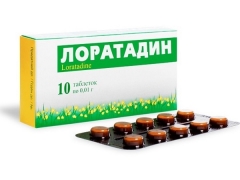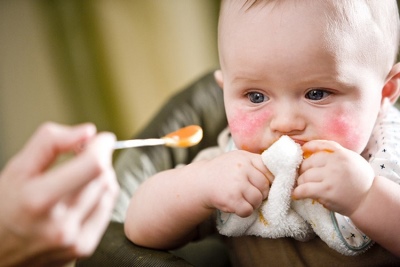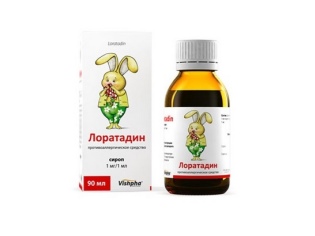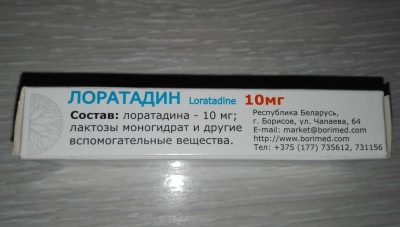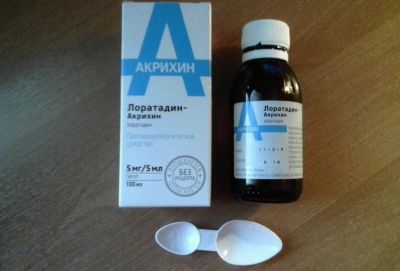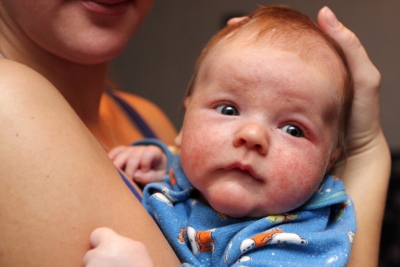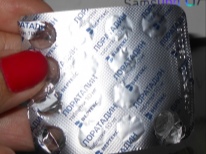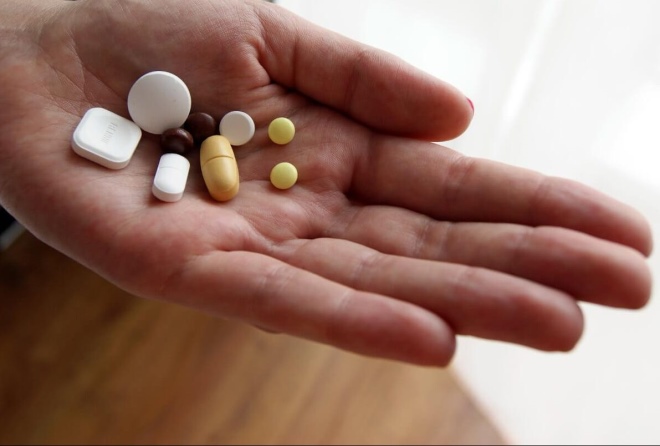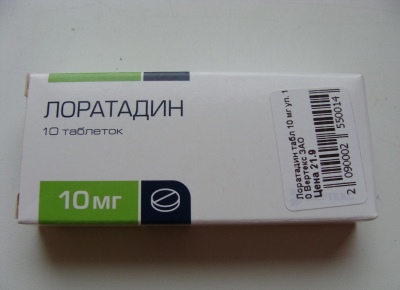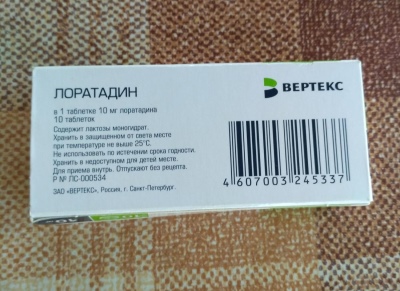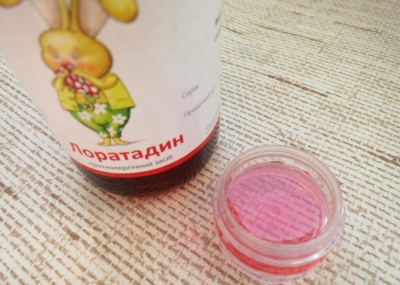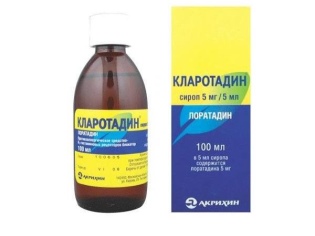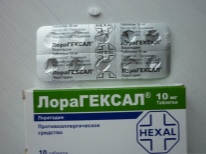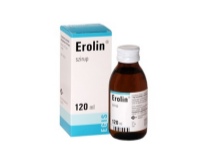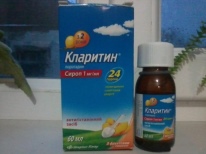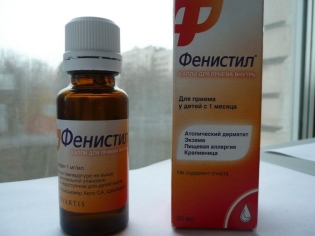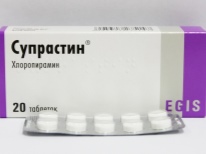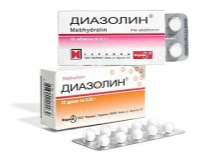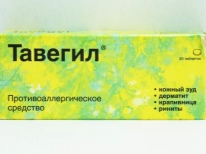Loratadine baby
Many parents experience an allergic reaction in a child. It may develop in response to inhalation of plant pollen, taking any medication, eating food, using a detergent, or for some other reason. In the fight against edema, rash, cough, sore throat and other symptoms of allergy most often use antihistamines. One of them is Loratadine. If he was assigned to a child, then parents should know how he acts on the children's body and how it is correctly taken.
Release form
Loratadine is produced by many pharmacological companies, and its name may contain a prefix indicating the manufacturer. For example, Loratadin Teva is produced by the Israeli company Teva, Loradatin-Akrikhin is a product of the Russian chemical-pharmaceutical plant Akrihin, and Loratadin-Hemofarm is produced in Serbia by Hemofarm concern. Moreover, all such drugs have the same active substance, the same indications, possible side effects and contraindications.
Pharmacies Loratadin presented:
- Syrup It is light yellow, sweet in taste, transparent thickish solution with a fruity odor. The volume of syrup in one bottle can be 50, 100 or 120 ml. A glass or measuring spoon is attached to the bottle in order to accurately measure such sweet medicine in the dose prescribed by the doctor.
- Pills. These are usually small round white tablets that are at risk. Most often they are produced in a package of 10 pieces, but one box can contain from 7 to 90 tablets.
- Effervescent tablets. In this form, Loratadin-Hemofarm is produced. Such tablets are sold in plastic tubes of 10 pieces, and one box contains 1-2 tubes.
Composition
All forms of the drug contain the same active substance, which is also called loratadine. In 5 ml of syrup, it is represented by a dosage of 5 mg, and one tablet contains 10 mg. The content of loratadine in one effervescent tablet is also 10 mg.
The composition of the syrup in addition to the active ingredient includes citric acid, propylene glycol, water, flavoring, ethanol, sodium benzoate, glycerin and other substances. Loratadine tablets additionally contain microcrystalline cellulose, calcium stearate, corn starch, lactose monohydrate, and other components that provide such a drug with a solid form.
The auxiliary ingredients of the effervescent beverage tablets are lactose, citric acid, sodium carbonate and bicarbonate, as well as macrogol 6000, povidone, silicon dioxide (colloidal) and polysorbate 80. With these compounds, the drug keeps its shape while in the tube, but dissolves quickly in water.
Operating principle
Loratadine blocks the histamine-sensitive H1 receptors, which prevents this biologically active compound and other substances from being released from mast cells. This action prevents the development of an allergic reaction or alleviates the symptoms of allergies, if they have already appeared. Admission Loratadina reduces the severity of itching, and also has a anti-exudative effect and reduces the permeability of small vessels, thereby reducing allergic edema.In addition, the drug has the ability to relax spasmodic smooth muscles.
The beginning of the therapeutic effect of Loratadine can be seen within half an hour after application. The maximum effect develops by 8-12 hours after administration and lasts up to 24 hours. Such a long-term effect on the body is associated with the formation of a substance called desloratadine, which also has antihistamine activity, in the process of metabolic changes of Loratadine. At the same time, the drug does not pass through the blood-brain barrier, therefore it is unable to inhibit the central nervous system and is addictive.
Indications
Loratadine can be assigned to a child:
- with allergic rhinitis;
- with pollinosis;
- with angioedema;
- with urticaria;
- allergic to insect bites;
- with inflammation of the skin, which is manifested by itching, as well as with chickenpox;
- with acute conjunctivitis;
- with atopic dermatitis;
- with false allergic reactions.
In addition, the drug is often prescribed for adenoiditis, pharyngitis, nasopharyngitis, and similar diseases in order to reduce the swelling of the mucous membrane.
At what age is it allowed to take?
Loradatin is not indicated for children under 2 years of age. A child who is 2 years old can be given any of the medication options. At the same time, the liquid form (syrup) is more convenient for treating small children up to 6 years old, but if a younger child (4 years or 5 years old) has no problems with swallowing solid medication, then he can also be given a tablet preparation.
Contraindications
Loratadin should not be given not only at the age of less than 2 years, but also in case of intolerance to any of the components of the selected form of the drug. There are no other contraindications for children, and the drug is not prescribed to adults during lactation and during pregnancy.
Side effects
Taking Loratadine can cause a decrease in appetite, changes in stool, nervous agitation, dry mouth, nausea, drowsiness, sweating, urticaria, headaches, and other negative symptoms. If they appear, the medication is immediately canceled.
Instructions for use and dosage
The drug is given to children once a day, determining the dosage by the age of the small patient, as well as by his weight:
- If the child is under 6 years old or older, but weighs less than 30 kg, then a single dose of the drug is 5 mg. It is contained in 5 ml of syrup or half a tablet of loratadine. Effervescent tablets for children less than six years old and with a weight less than 30 kg are not prescribed;
- If the weight of a small patient is above 30 kg and its age is 6 years or more, then a single dosage for it will be 10 mg of loratadine. The patient can receive such dose from 2 measured spoons of syrup (10 ml), one tablet or one effervescent tablet.
To prepare a drink from an effervescent tablet, you need to throw it in 200 ml of water, and then drink the drug. Swallowing, dissolving, or chewing Loratadine in this form is not recommended.
Overdose
If you give the child a higher dose than the doctor prescribed, it will lead to drowsiness and headaches, as well as tachycardia and motor neurological disorders. Having noticed an overdose, you should immediately induce vomiting in a small patient and give the baby a sorbent. If the child's condition worsens, you must show it to the doctor.
Interaction with other drugs
Loratadine is compatible with many medicines, therefore it is often used in the treatment complex for infectious diseases, elevated acetone, and other problems for which it is necessary to prevent or eliminate an allergic reaction. In this case, the drug should not be given along with rifampicin, barbiturates, erythromycin and some other means indicated in the annotations to the tablets or syrup.
Terms of sale
All forms of Loratadine are non-prescription drugs, so they are freely sold in pharmacies. The price of the drug depends on the manufacturer, and the dosage form, and the size of the package.For example, 10 tablets of Loratadin cost about 13-15 rubles, and a bottle of Loratadin-Akrikhin syrup costs about 150 rubles.
Storage conditions
Keep any form of loratadine at home should be at room temperature in a place hidden from small children, dry and inaccessible to sunlight. Shelf life of the drug varies from different manufacturers, so it should be clarified (data are available on the box of the acquired funds). Often syrup is stored 3-4 years from the date of manufacture, and tablets - 3-5 years.
Reviews
In most cases, parents are satisfied with the treatment of children with Loratadine and note its high efficacy in allergic reactions. Moms often choose syrup and praise this form for its pleasant taste and ease of use. The advantages of the medication in tablets include small size, the need to take only once a day and low cost.
Analogs
A full replacement for Loratadine can be drugs that contain the same active ingredient, for example:
- Lomilan.
- LoraGEKSAL.
- Claritin.
- Clarosens
- Claridol
- Erolin.
- Klarotadin.
Many of them have a form of syrup or suspension, which is convenient for treatment in childhood. In addition, the doctor may prescribe other antihistamine medicines. This may be Suprastin, Diazolin, Tavegil, Zyrtec drops, Erius, fenistil or other means with a similar effect, however, you should choose one of these drugs as an analogue of Loratadine along with your doctor. Since all these medications include different active compounds, and some of them are not used at an early age, it is impossible to give any antihistamine medication to a child without consulting a pediatrician.
See the transfer of children's doctor Komarovsky, from which you will learn what anti-allergy drugs your child can use.
